-
 Bitcoin
Bitcoin $105,734.0170
-1.51% -
 Ethereum
Ethereum $2,414.7328
-3.26% -
 Tether USDt
Tether USDt $1.0002
0.00% -
 XRP
XRP $2.1748
-2.62% -
 BNB
BNB $647.5663
-1.72% -
 Solana
Solana $148.1710
-3.81% -
 USDC
USDC $0.9999
-0.01% -
 TRON
TRON $0.2799
-0.02% -
 Dogecoin
Dogecoin $0.1586
-4.17% -
 Cardano
Cardano $0.5440
-5.03% -
 Hyperliquid
Hyperliquid $37.0680
-6.59% -
 Bitcoin Cash
Bitcoin Cash $501.2052
-4.01% -
 Sui
Sui $2.6846
-3.47% -
 Chainlink
Chainlink $12.8488
-3.38% -
 UNUS SED LEO
UNUS SED LEO $8.9480
-1.51% -
 Avalanche
Avalanche $17.2059
-3.87% -
 Stellar
Stellar $0.2270
-4.75% -
 Toncoin
Toncoin $2.7889
-3.93% -
 Shiba Inu
Shiba Inu $0.0...01126
-1.76% -
 Litecoin
Litecoin $83.6893
-3.36% -
 Hedera
Hedera $0.1445
-4.49% -
 Monero
Monero $312.4014
-2.58% -
 Dai
Dai $1.0000
0.00% -
 Ethena USDe
Ethena USDe $1.0001
-0.01% -
 Polkadot
Polkadot $3.2920
-3.32% -
 Bitget Token
Bitget Token $4.4629
-1.81% -
 Uniswap
Uniswap $6.5386
-8.42% -
 Aave
Aave $260.3780
-6.01% -
 Pepe
Pepe $0.0...09308
-4.54% -
 Pi
Pi $0.4864
-3.04%
What is the difference between BEP2 and BEP20 in Trust Wallet?
BEP2 and BEP20 are distinct token standards on Binance Chain and Binance Smart Chain, crucial for correct crypto transactions.
Jul 02, 2025 at 04:28 am
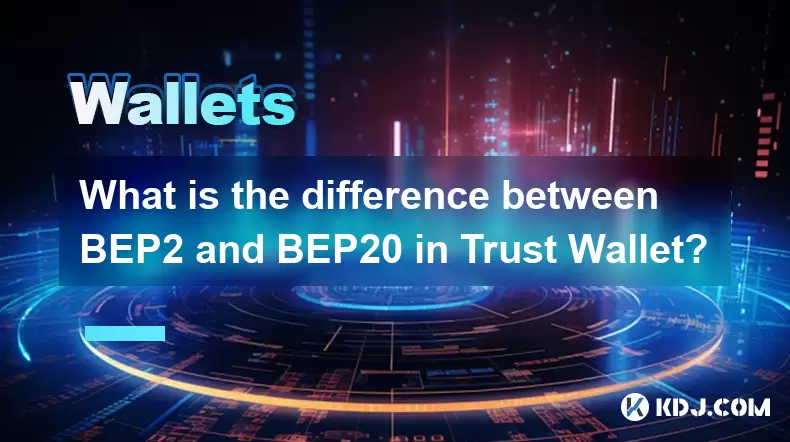
Understanding BEP2 and BEP20 Standards
In the realm of cryptocurrency, especially within the Binance ecosystem, BEP2 and BEP20 are two token standards that often cause confusion among users. Both standards operate on different blockchain networks and serve distinct purposes. BEP2 is a token standard native to the Binance Chain, while BEP20 is a token standard designed for the Binance Smart Chain (BSC).
BEP2 tokens are primarily used for fast transactions and trading on the Binance DEX (decentralized exchange). These tokens do not support smart contracts and are limited in functionality compared to BEP20.
BEP20, on the other hand, is compatible with Ethereum’s ERC-20 standard and allows developers to build decentralized applications (dApps) and deploy smart contracts. This makes BEP20 more versatile and widely adopted by DeFi projects.
How Trust Wallet Handles BEP2 and BEP20 Tokens
Trust Wallet supports both BEP2 and BEP20 tokens, but it treats them differently due to their underlying blockchain protocols. When you receive or send tokens through Trust Wallet, it's crucial to ensure you're using the correct network address.
For BEP2 tokens, you must use your Binance Chain address. Sending BEP2 tokens to a BSC address can result in permanent loss of funds. Similarly, BEP20 tokens should only be sent to BSC-compatible addresses. Trust Wallet clearly separates these two networks under different tabs — one for Binance Chain and another for Binance Smart Chain.
Identifying BEP2 and BEP20 Addresses in Trust Wallet
One of the most critical aspects of managing tokens in Trust Wallet is being able to distinguish between BEP2 and BEP20 addresses. Here's how you can identify them:
- Open the Trust Wallet app and navigate to the wallet section.
- Select the relevant token or coin you want to check.
- Tap on "Receive" to view your receiving address.
- If the address starts with "bnb1...", it belongs to the BEP2 standard (Binance Chain).
- If the address starts with "0x...", it belongs to the BEP20 standard (Binance Smart Chain).
Always double-check the address format before initiating any transaction to avoid irreversible mistakes.
Receiving and Sending BEP2 vs. BEP20 Tokens
Transferring tokens in Trust Wallet requires attention to detail, particularly when dealing with BEP2 and BEP20 tokens. Below is a step-by-step guide:
To receive BEP2 tokens:
- Go to the asset you want to receive (e.g., BNB).
- Tap "Receive".
- Ensure the displayed address starts with "bnb1...".
- Share this address with the sender.
To receive BEP20 tokens:
- Navigate to the Binance Smart Chain version of your wallet.
- Tap "Receive".
- Verify that the address begins with "0x...".
- Provide this address to the sender.
Sending tokens follows a similar process:
- Choose the correct network for the token you're sending.
- Paste the recipient's address into the destination field.
- Double-check the address format to match the token standard.
- Confirm the transaction after verifying gas fees and amount.
Common Mistakes and How to Avoid Them
Many users have lost funds due to sending tokens to the wrong network. One common mistake is sending BEP20 tokens to a BEP2 address or vice versa. Since these networks are separate and incompatible, such transactions cannot be reversed.
Another frequent error is confusing BSC (BEP20) tokens with native BNB (BEP2). Always confirm whether the token you're transferring is based on Binance Chain or Binance Smart Chain.
To prevent these issues:
- Never assume all BNB addresses are the same.
- Use the correct network tab in Trust Wallet for each transaction.
- Verify the address format before confirming any transfer.
- Start with small test transactions if unsure about compatibility.
Frequently Asked Questions
Q: Can I convert BEP2 tokens to BEP20 tokens directly in Trust Wallet?
No, Trust Wallet does not offer direct conversion between BEP2 and BEP20 tokens. You would need to use a bridge service or transfer the tokens through Binance, where they can be swapped between networks.
Q: What happens if I send BEP20 tokens to a BEP2 address?
If you mistakenly send BEP20 tokens to a BEP2 address, the funds will likely be lost permanently. The Binance Chain and Binance Smart Chain are separate blockchains, and cross-chain transfers require specific bridges or intermediaries.
Q: Are there any fees associated with BEP2 and BEP20 transactions in Trust Wallet?
Yes, both BEP2 and BEP20 transactions incur network fees. For BEP2, the fee is paid in BNB (BEP2), while for BEP20, the fee is also in BNB but from the BSC wallet. Gas prices may vary depending on network congestion.
Q: Is it safe to store both BEP2 and BEP20 tokens in the same Trust Wallet account?
Yes, Trust Wallet securely stores both types of tokens, but they appear under separate network tabs. As long as you manage them carefully and never mix up the addresses, it's completely safe.
Disclaimer:info@kdj.com
The information provided is not trading advice. kdj.com does not assume any responsibility for any investments made based on the information provided in this article. Cryptocurrencies are highly volatile and it is highly recommended that you invest with caution after thorough research!
If you believe that the content used on this website infringes your copyright, please contact us immediately (info@kdj.com) and we will delete it promptly.
- Crypto Trends 2025: MAGACOIN FINANCE Surges, Ethereum Mining Evolves, and XRP Payouts Innovate
- 2025-07-02 10:30:12
- Ethereum, MAGACOIN FINANCE, and Inflation: A Shift in Crypto Investor Focus
- 2025-07-02 10:30:12
- Kangaroos, Coin Purses, and a Hop Through Money History: You Gotta See This!
- 2025-07-02 10:50:15
- Arbitrum, Robinhood, and ARB Price: Is a Rebound on the Horizon?
- 2025-07-02 10:50:15
- Michael Saylor, Bitcoin, and $500 Million: A Winning Strategy?
- 2025-07-02 08:30:12
- Toncoin's Telegram Takeover: Price Predictions and the Power of Utility
- 2025-07-02 09:10:12
Related knowledge
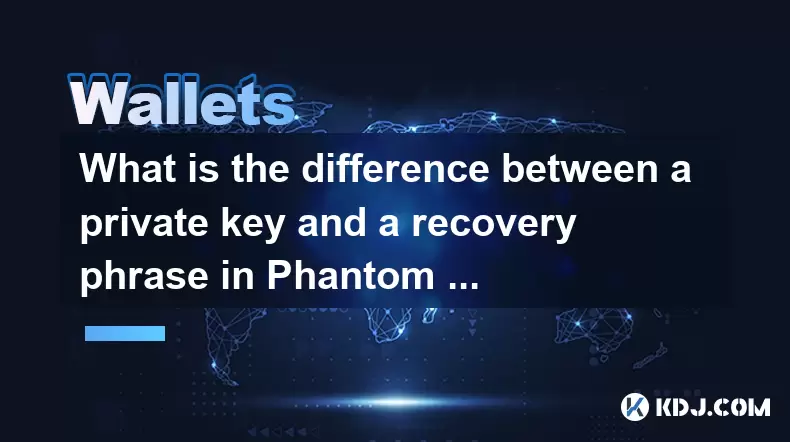
What is the difference between a private key and a recovery phrase in Phantom wallet?
Jul 02,2025 at 09:57am
Understanding the Basics of Phantom WalletPhantom wallet is a non-custodial digital wallet primarily used for interacting with the Solana blockchain. It allows users to store, send, and receive SOL tokens and other digital assets like NFTs. Non-custodial means that the user retains full control over their private keys and recovery phrases. Understanding...
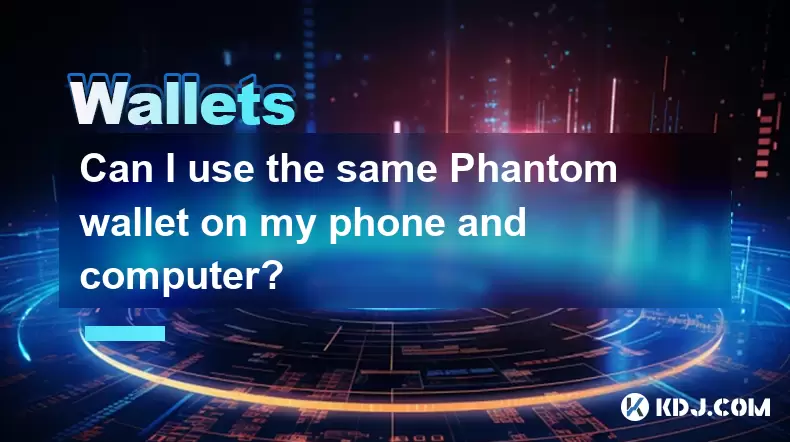
Can I use the same Phantom wallet on my phone and computer?
Jul 02,2025 at 10:04am
Phantom Wallet: Cross-Device CompatibilityPhantom wallet is a non-custodial cryptocurrency wallet designed primarily for interacting with the Solana blockchain. It supports both browser extensions and mobile applications, making it versatile for users who want to manage their digital assets across multiple devices. One of the most common questions among...
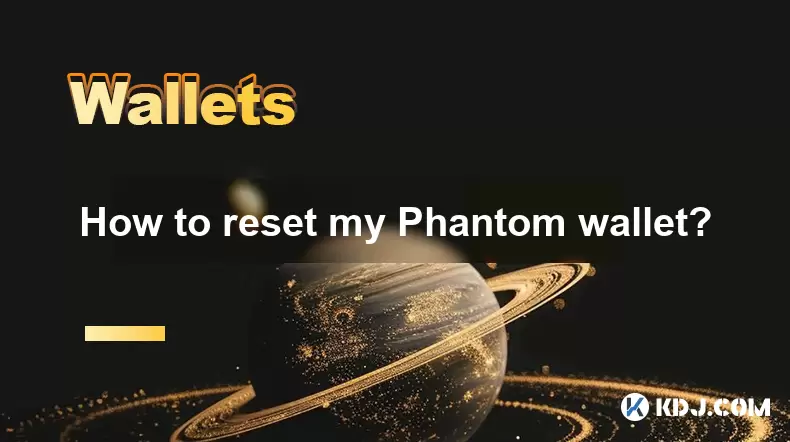
How to reset my Phantom wallet?
Jul 02,2025 at 12:36am
Understanding the Need for Resetting Your Phantom WalletIf you're using a Phantom wallet, you may encounter situations where resetting your wallet becomes necessary. This could be due to forgotten passwords, seed phrase issues, or account corruption. Phantom is a non-custodial wallet primarily used for interacting with the Solana blockchain, and it stor...
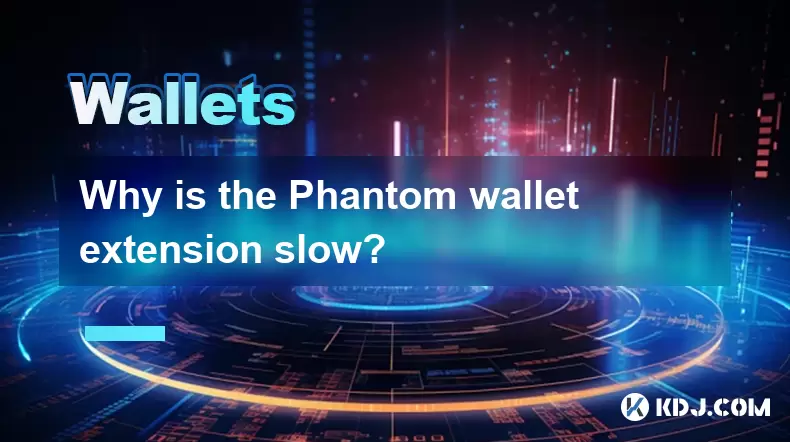
Why is the Phantom wallet extension slow?
Jul 02,2025 at 04:15am
Phantom Wallet Extension: Why Is It Slow?Phantom wallet is a widely used browser extension for interacting with decentralized applications (dApps) on the Solana blockchain. Despite its popularity, some users report that the Phantom wallet extension runs slowly at times. This article delves into potential reasons behind this performance issue and provide...
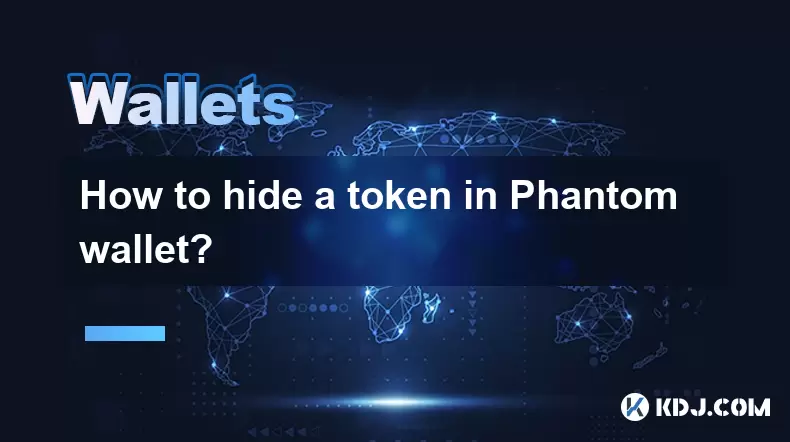
How to hide a token in Phantom wallet?
Jul 01,2025 at 05:49pm
Understanding the Phantom Wallet InterfacePhantom wallet is a popular non-custodial wallet used primarily for interacting with the Solana blockchain. It allows users to store, send, receive, and manage various tokens, including both fungible and non-fungible tokens (NFTs). Before attempting to hide a token, it's essential to understand how the wallet in...
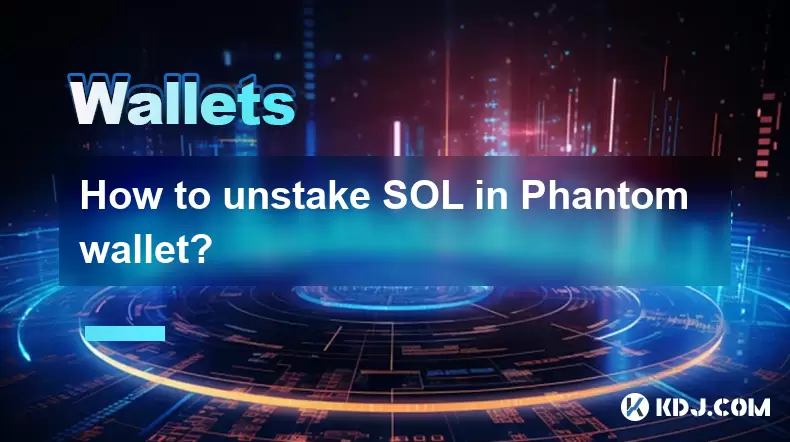
How to unstake SOL in Phantom wallet?
Jul 02,2025 at 06:49am
What Is Staking SOL in Phantom Wallet?Staking SOL involves locking up your SOL tokens to support the Solana network and earn rewards. The Phantom wallet, a popular non-custodial wallet for Solana, allows users to stake their SOL directly from the interface. When you stake SOL, it becomes temporarily unavailable as it is delegated to a validator. This pr...

What is the difference between a private key and a recovery phrase in Phantom wallet?
Jul 02,2025 at 09:57am
Understanding the Basics of Phantom WalletPhantom wallet is a non-custodial digital wallet primarily used for interacting with the Solana blockchain. It allows users to store, send, and receive SOL tokens and other digital assets like NFTs. Non-custodial means that the user retains full control over their private keys and recovery phrases. Understanding...

Can I use the same Phantom wallet on my phone and computer?
Jul 02,2025 at 10:04am
Phantom Wallet: Cross-Device CompatibilityPhantom wallet is a non-custodial cryptocurrency wallet designed primarily for interacting with the Solana blockchain. It supports both browser extensions and mobile applications, making it versatile for users who want to manage their digital assets across multiple devices. One of the most common questions among...

How to reset my Phantom wallet?
Jul 02,2025 at 12:36am
Understanding the Need for Resetting Your Phantom WalletIf you're using a Phantom wallet, you may encounter situations where resetting your wallet becomes necessary. This could be due to forgotten passwords, seed phrase issues, or account corruption. Phantom is a non-custodial wallet primarily used for interacting with the Solana blockchain, and it stor...

Why is the Phantom wallet extension slow?
Jul 02,2025 at 04:15am
Phantom Wallet Extension: Why Is It Slow?Phantom wallet is a widely used browser extension for interacting with decentralized applications (dApps) on the Solana blockchain. Despite its popularity, some users report that the Phantom wallet extension runs slowly at times. This article delves into potential reasons behind this performance issue and provide...

How to hide a token in Phantom wallet?
Jul 01,2025 at 05:49pm
Understanding the Phantom Wallet InterfacePhantom wallet is a popular non-custodial wallet used primarily for interacting with the Solana blockchain. It allows users to store, send, receive, and manage various tokens, including both fungible and non-fungible tokens (NFTs). Before attempting to hide a token, it's essential to understand how the wallet in...

How to unstake SOL in Phantom wallet?
Jul 02,2025 at 06:49am
What Is Staking SOL in Phantom Wallet?Staking SOL involves locking up your SOL tokens to support the Solana network and earn rewards. The Phantom wallet, a popular non-custodial wallet for Solana, allows users to stake their SOL directly from the interface. When you stake SOL, it becomes temporarily unavailable as it is delegated to a validator. This pr...
See all articles

























































































